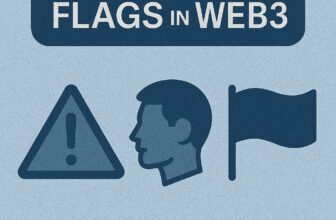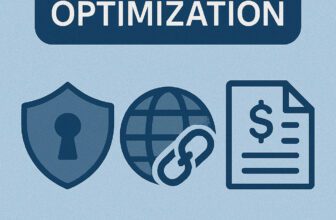NFTs & Web3 Apps in Practice
Your Practical Introduction to NFTs and the World of Web3
-
Level
Beginner to Intermediate
-
Duration
~40 minutes
-
Lesson
7 of 11
-
Course
Crypto in Practice
-
Status
✅ Completed
📘 Lesson 7: NFTs & Web3 Apps in Practice
Intro:
NFTs and Web3 apps are transforming the way we own digital content and interact with decentralized platforms. In this lesson, you’ll learn how NFTs (Non-Fungible Tokens) and Web3 applications work, how to use them, and why they matter in today’s crypto space. From collecting digital art to using decentralized apps (dApps), you’ll gain practical knowledge to safely engage with these tools.
🔍 Overview
In this lesson, we explore what makes NFTs unique and how Web3 apps are redefining digital engagement. You’ll walk away with the skills to use, explore, and interact with these technologies securely and confidently.
📋 What You’ll Need to Know
1. Prerequisites:
- Working knowledge of crypto wallets
- Basic understanding of smart contracts and tokens
- Previous lessons on transactions and DeFi fundamentals
2. Target Audience:
- Creators and collectors curious about NFTs
- Users exploring the Web3 ecosystem
- Crypto learners eager to try decentralized applications
📚 Lesson Content
This section dives into the function, purpose, and use of NFTs and Web3 apps with minimal bullet points and rich sectioning for SEO and reader experience.
✍️ Content
🖼️ What Are NFTs and How Do They Work?
NFTs, or Non-Fungible Tokens, are blockchain-based digital assets that represent ownership of unique items like art, music, game assets, or identity credentials. Unlike cryptocurrencies such as Bitcoin or Ethereum, NFTs are not interchangeable. Each has distinct metadata and ownership history recorded on-chain.
Today, NFTs are widely used in digital art markets, gaming ecosystems, and community membership platforms. For example, a music artist can mint an NFT granting backstage access to fans, or a designer can sell tokenized collectibles on a platform like OpenSea.
NFTs are most commonly built on Ethereum using the ERC-721 or ERC-1155 standards, but other chains like Polygon, Solana, and Tezos are also popular. These standards define how NFTs behave and interact across marketplaces.
🌐 Understanding and Using Web3 Apps
Web3 apps, or dApps (decentralized applications), differ from traditional applications because they run on blockchain networks. Instead of usernames and passwords, they rely on wallet connections for identity and access. When you visit a dApp, you “sign in” using a wallet like MetaMask.
Web3 apps allow users to mint NFTs, trade tokens, play blockchain-based games, and engage in decentralized finance—all without relying on centralized authorities. Examples include marketplaces like Rarible, social platforms like Lens Protocol, and even Web3 productivity tools.
Connecting to a dApp usually involves signing a transaction or message with your wallet, proving ownership without revealing private data.
🔐 How to Use NFTs and Web3 Apps Securely
While NFTs and Web3 apps offer innovation, they also introduce new risks. Always verify the authenticity of NFT collections by checking the smart contract address, creator history, and community feedback. Avoid clicking unknown links on social media or in Discord groups.
When interacting with a dApp, confirm the URL is correct and consider using a separate “burner wallet” for initial access. Never grant unlimited permissions unless absolutely necessary, and periodically revoke unused app approvals using tools like revoke.cash or your wallet’s built-in features.
💡 Real-World Use Cases
NFTs and Web3 apps aren’t limited to art or gaming. They’re increasingly being used in ticketing systems, event access, DAO memberships, domain name ownership (e.g., ENS), and even digital identity verification. Educational institutions and tech companies are exploring NFTs to issue verifiable credentials and licenses.
Web3 apps now power decentralized freelancing platforms, voting systems, and even decentralized social media platforms, giving users ownership of their content and engagement.
✨ Key Elements
- NFTs establish digital ownership and identity
- Web3 apps allow interaction without central control
- Wallet security and smart contract awareness are essential
- Use cases go far beyond art and gaming
🔗 Related Terms:
NFT, Web3, dApps, blockchain ownership, decentralized identity, ERC-721, ERC-1155, smart contracts, MetaMask, OpenSea, token gating
📌 Conclusion
NFTs and Web3 apps are a cornerstone of the decentralized internet. Whether you’re collecting art, joining DAOs, or building a Web3 presence, this lesson empowers you to use these tools responsibly and effectively in real-world scenarios.
Featured Courses
Capstone: Simulated Web3 Journey
Managing Risks & Red Flags in Web3
Privacy & Transaction Optimization
Using Crypto in Daily Life
NFTs & Web3 Apps in Practice
Introduction to DeFi: Lending, Staking & Yield Explained
Understanding Block Explorers in Crypto
Bridges & Multi-Chain Navigation
Swapping Tokens & Using DEXs
Using Crypto in Daily Life
🚀 Keep Exploring Web3
Learn how to use your crypto in everyday scenarios—from payments and subscriptions to donations and travel. This next lesson bridges the gap between the blockchain world and your real-world activities.
Go to Lesson 8 – Using Crypto in Daily LifeJoin the Crypto Hoopoe Community








